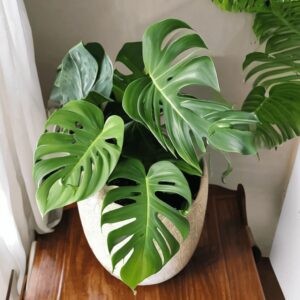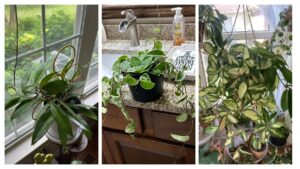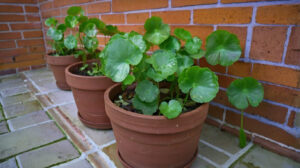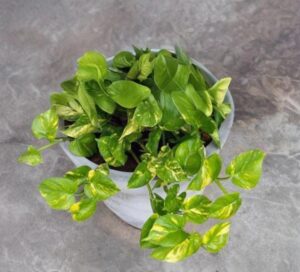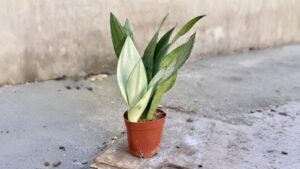
In Part 1, we discussed the best herbs for aquaponics and how to grow them. In this section, we will explore some advanced tips for growing herbs in aquaponics, as well as troubleshooting common issues that may arise.
In this article
Setting Up the Aquaponic Growing System
Here are detailed step-by-step instructions for setting up an aquaponic growing system:
Setting Up Your Fish Tank:
- Choose the Right Tank: Select a fish tank that suits the type and number of fish you plan to keep. Make sure it’s made of aquarium-grade glass or acrylic. The size of the tank will depend on your available space and the specific requirements of the fish species. It’s generally recommended to have a tank with a capacity of at least 20 gallons for small-scale aquaponics.
- Location and Support: Place the tank on a level, sturdy surface that can support the weight of the filled tank. Ensure the surface is even to prevent stress on the tank’s seams.
- Water Filling: Fill the tank with dechlorinated water. Chlorine in tap water can harm the fish and beneficial bacteria in the system. You can use a dechlorinator or leave the water out for a day to allow chlorine to dissipate naturally.
- Install a Water Pump: Choose an appropriately sized water pump for your tank’s capacity. Attach the pump to a flexible hose or pipe and place it in the tank. The pump will circulate water from the fish tank to the media bed and back. Ensure the pump is positioned so that it doesn’t suck up fish waste or debris from the tank bottom.
- Add an Air Stone: Attach an air pump to an air stone or air diffuser and place it at the bottom of the fish tank. This provides essential oxygen for the fish. Make sure the air stone is properly secured, so it doesn’t move around.
- Cycling the System: Allow the fish tank to run for a few days without fish to cycle the system. Cycling establishes a healthy population of beneficial bacteria in the water, which will convert fish waste into plant-friendly nutrients. Monitor the water parameters (ammonia, nitrite, and nitrate levels) to ensure the cycling process is complete before adding fish.
Building Your Media Bed:
- Select a Container: Choose a container for the media bed that is appropriate for the size and layout of your aquaponics system. It can be a rectangular or square container, or even a purpose-built grow bed. The container should be watertight and sturdy.
- Fill with Growing Medium: Use an inert growing medium like expanded clay pellets (hydroton), gravel, or growstones. Fill the media bed with the growing medium, leaving a few inches of space at the top to accommodate the water level. Make sure the medium is well-rinsed to remove any dust or debris before placing it in the container.
- Siphon Drain System: Install a siphon drain or bell siphon at one end of the media bed. This mechanism will regulate the water level in the media bed, preventing overflows. The siphon will allow water to drain back into the fish tank once it reaches a certain level in the media bed.
- Position the Media Bed: Place the media bed above the fish tank or in a location where water can easily flow back into the tank. Ensure it’s level to prevent uneven water distribution.
- Plant Your Herbs: Once the media bed is set up, plant your herb seeds or seedlings in the growing medium. Ensure they are positioned securely and at the right depth for optimal growth.
With your fish tank and media bed in place, your aquaponics system is well on its way. After setting up the system, you can add fish to the tank and monitor the water parameters regularly to ensure a healthy and balanced ecosystem for both your fish and plants.
Choosing the Right Fish
In aquaponics systems, the choice of fish is critical as they play a central role in providing nutrients for the plants. Some types of fish are well-suited for aquaponics due to their ability to produce waste that serves as a natural fertilizer for the plants and their adaptability to the aquaponics environment. Here are some popular fish species for aquaponics:
- Tilapia: Tilapia is one of the most common choices for aquaponics. They grow quickly, tolerate a wide range of water conditions, and produce a substantial amount of waste. They are an excellent choice for beginners.
- Trout: Trout are another fast-growing fish suitable for aquaponics. They prefer cooler water temperatures, so they are ideal for regions with colder climates. However, they require careful monitoring of water conditions.
- Catfish: Catfish are hardy and adaptable fish, making them a good choice for aquaponics. They can handle a variety of water conditions and are known for their high waste production, which benefits the plants.
- Koi: Koi are often used in ornamental aquaponics systems. They are attractive fish that can grow quite large and produce ample waste. However, they require a bit more care and attention than some other species.
- Goldfish: Similar to koi, goldfish are commonly used in ornamental aquaponics systems. They are easy to care for, produce waste that benefits the plants, and add a decorative element to the system.
- Perch: Perch are a cold-water fish that can do well in aquaponics. They are popular in regions with colder climates and provide excellent water quality for the plants.
- Barramundi: Barramundi is a warm-water fish known for its delicious flavor. They grow quickly and can thrive in aquaponics systems with proper care.
The choice of fish should consider your local climate, water temperature, and personal preferences. It’s important to maintain the right water conditions, feed the fish a balanced diet, and ensure their overall health to ensure a successful aquaponics system. Additionally, some regions may have regulations or restrictions on certain fish species, so it’s important to check local guidelines before selecting fish for your aquaponics setup.
Advanced Tips for Growing Herbs in Aquaponics
If you’re an experienced aquaponic gardener, you may be interested in trying some advanced techniques to maximize your herb production. Here are some tips to consider:
- Experiment with different herb varieties: While the top 10 herbs we discussed earlier are popular and easy to grow, there are many other herb varieties that can thrive in aquaponics systems. Consider trying some less common herbs, such as lemon balm, stevia, or tarragon, to see how they perform in your system.
- Introduce beneficial insects or companion plants: Insects such as ladybugs, lacewings, and praying mantises can help control pests naturally in your aquaponics system. You can also plant companion plants such as marigolds, nasturtiums, or garlic, which can repel pests and attract beneficial insects.
- Implement vertical growing systems: If you’re short on space, consider using vertical growing systems to maximize your herb production. You can use trellises, hanging baskets, or tower gardens to grow herbs vertically, which can increase your yield and save space.
Troubleshooting Common Issues
Even with the best care, issues can arise in aquaponics systems. Here are some common problems that you may encounter and how to address them:
- Nutrient deficiencies or imbalances: If your herbs are showing signs of yellowing leaves, stunted growth, or poor flavor, they may be experiencing a nutrient deficiency or imbalance. Test the water regularly and adjust the nutrient levels as needed using a balanced aquaponic fertilizer.
- Pest infestations: Common pests in aquaponics systems include aphids, spider mites, and whiteflies. You can control these pests naturally by introducing beneficial insects or using organic pest control methods such as neem oil or insecticidal soap.
- pH fluctuations: pH fluctuations can occur in aquaponics systems due to changes in water temperature, fish feeding, or plant growth. Test the pH regularly and adjust it using pH up or pH down solutions as needed.
- Algae growth in the fish tank: Algae growth in the fish tank can be unsightly and can also affect the water quality. To prevent algae growth, keep the tank out of direct sunlight and limit the amount of fish food you feed your fish.
Conclusion
Growing herbs in aquaponics systems is a sustainable and efficient way to produce fresh, flavorful herbs year-round. By following the steps outlined in this article and experimenting with different techniques, you can create a thriving herb garden that provides a steady supply of herbs for cooking, teas, and homemade beauty products. Remember to monitor your system regularly for any signs of nutrient deficiencies or imbalances, and adjust the pH and nutrient levels as needed.
Frequently Asked Questions
Which herbs grow well in aquaponics?
Some of the best herbs to grow in aquaponics systems include basil, mint, parsley, cilantro, and oregano. These herbs are relatively easy to grow, have high market demand, and can thrive in the nutrient-rich water of aquaponics systems.
Do I need to use any fertilizers in my aquaponics system?
In aquaponics systems, the fish waste provides the necessary nutrients for the plants. However, you may need to supplement the system with additional nutrients, such as iron or potassium, if you notice any nutrient deficiencies in your herbs.
Can I grow herbs in aquaponics indoors?
Yes, herbs can be successfully grown in aquaponics systems indoors, as long as they receive sufficient light. Consider using artificial grow lights or placing your aquaponics system near a south-facing window to provide the necessary light for your herbs to thrive.
With a little patience and care, you can enjoy the many benefits of aquaponic herb gardening.
Happy gardening!
References
- Go Green Aquaponics: A comprehensive guide to growing herbs in aquaponics systems, including tips on choosing the right fish, selecting the appropriate grow bed, and maintaining proper water quality.
- Aquaponics Association: A non-profit organization dedicated to promoting the benefits of aquaponics and supporting the aquaponics community through education, research, and advocacy.

